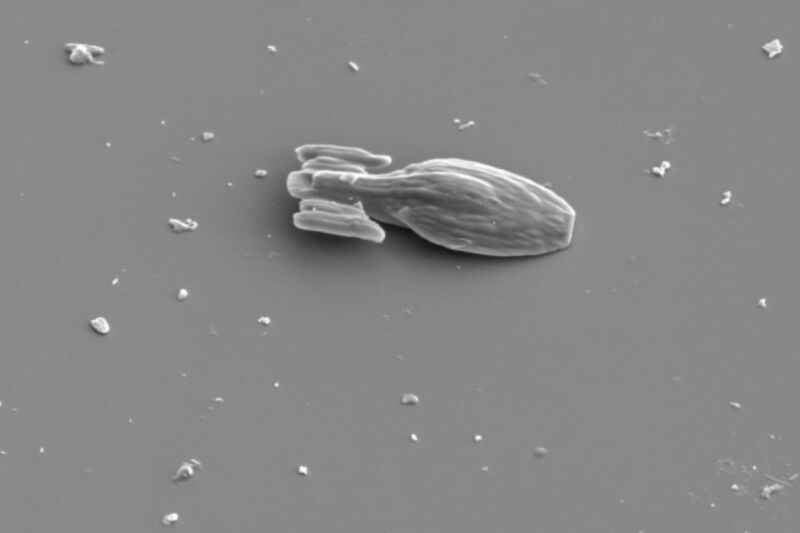Tiny version of USS Voyager sheds light on physics of microswimmers

Enlarge / SEM image of a 3D-printed microscopic version of the USS Voyager, a fictional Intrepid class starship from the Star Trek franchise. Studying such objects could lead to tiny robots for targeted drug delivery, among other applications. (credit: R.P. Doherty et al/Soft Matter)
Physicists at Leiden University in the Netherlands have created a 3D-printed microscopic version of the USS Voyager from the Star Trek franchise, according to a recent paper in the journal Soft Matter. These kinds of synthetic "microswimmers" are of great interest to scientists because they could one day lead to tiny swimming robots for autonomous drug delivery through the bloodstream, or for cleaning wastewater, among other potential applications. Such studies could also shed light on how natural "microswimmers" like sperm and bacteria travel through the human body.
Because of their small size, microswimmers face unique challenges when they move through fluids. As we've reported previously in the context of different research, biological microorganisms live in environments with a low so-called Reynolds number-a number that predicts how a fluid will behave based on the variables viscosity, length, and speed. Named after the 19th-century physicist Osborne Reynolds, the concept is especially useful for predicting when a fluid will transition to turbulent flow.
In practical terms, it means that inertial forces (e.g., pushing against the water to propel yourself forward while swimming) are largely irrelevant at very low Reynolds numbers, where viscous forces dominate instead. So because bacteria or sperm swim at low Reynolds numbers, they can barely coast any distance at all if you push them to set them in motion. It's akin to a human trying to swim in molasses.
Read 11 remaining paragraphs | Comments